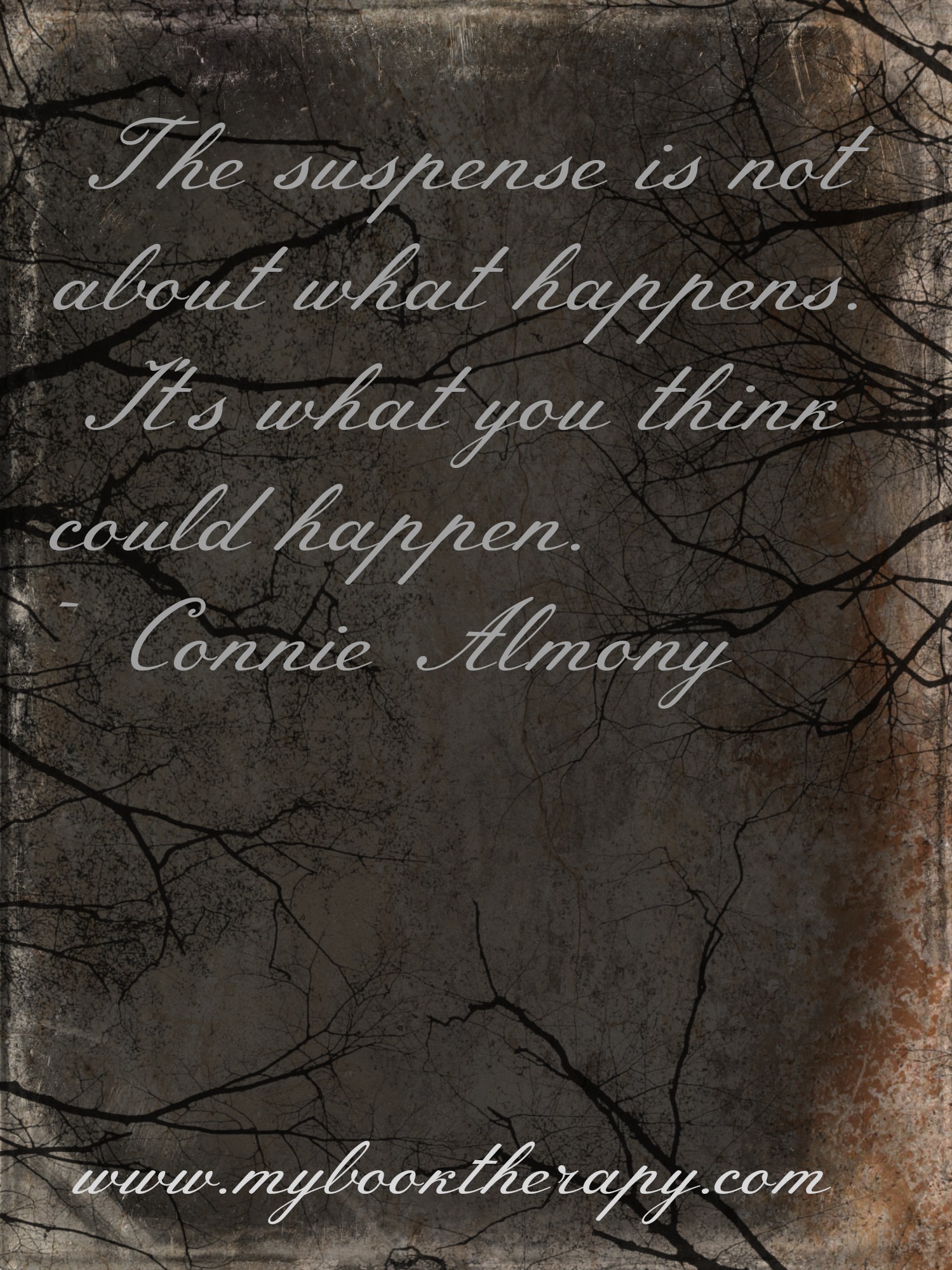Have you ever watched a scene in a scary movie where the camera pans around the house in a tight zoom from room to room? Nothing bad or frightening is happening in those rooms, but for some reason you know it will. The camera focuses on a person watching TV, another cutting a sandwich with a sharp knife, innocent children playing in the yard. Maybe the musical score is filled with dissonant chords or whiney instruments. Your heart pounds. You contemplate covering your eyes to shield them from the likely assault, or at least having your palms at the ready.
A noise sounds to the right. The camera swings to spot its source. And then …
A small boy asks to go to the bathroom.
That’s right, no hairy monster. No one-eyed man with an ax. And yet you rode the pulse thrumming excitement of all that adrenaline, expecting something great—and loved it.
Deep breath!
This is what we call suspense. Hitchcock used it all the time. M. Night Shyamalan employed it in the movie Signs. It was also what made the film Jaws such a thriller. You thought the shark was coming toward the group of kids splashing in the water—but … no shark. The suspense is not about what happens. It’s what you think could happen.
Suspense is not action. It’s the expectation of something big and sometimes more intense than the event itself. It not only uses the writer’s imagination, but taps into all the possibilities swimming around in the reader’s mind as well. And the reader might fill it in with his or her own deepest, darkest fear—a suspense writer’s gold.
How do you write suspense? Unlike action pacing, suspense is slower, more drawn out, and filled with details that set a tone of expectation, leaving multiple clues of various possibilities. Like the camera angles in the tight zoom of a movie, the author shows very little of what is really there, but leads the reader to believe deadly hazards are all around. There may be a deadened silence, broken only by an eerie sound—footsteps on a vacant walk, the pop of a light bulb burning out, a black crow cawing.
Why do these things make our hearts pound? Because the anticipation of something awful is actually more anxiety producing than the experience of it. The anticipation makes us ask the questions, “What is the next challenge?” and “Can we get through it?” The experience shows us we can. Which is scarier to you? The not knowing.
However, unlike life, where we want these answers right away, the author’s bread and butter is in making the reader wait. So stretch these moments out. Add more description mixed with hints that are crucial to the story so they won’t miss a letter. That’s the essence of suspense.
What is your favorite suspense scene in a book or a movie? How did the writer play on your imagination to create the suspense in your mind?
~*~
 Connie Almony is the author of At the Edge of a Dark Forest, a modern-day Beauty and the Beast story about a war-vet, amputee struggling with PTSD. You can find her writing book reviews for Jesus Freak Hideout, hosting InfiniteCharacters.com and LivingtheBodyofChrist.Blogspot.com, or hanging out on Twitter, Facebook and Pinterest.
Connie Almony is the author of At the Edge of a Dark Forest, a modern-day Beauty and the Beast story about a war-vet, amputee struggling with PTSD. You can find her writing book reviews for Jesus Freak Hideout, hosting InfiniteCharacters.com and LivingtheBodyofChrist.Blogspot.com, or hanging out on Twitter, Facebook and Pinterest.
